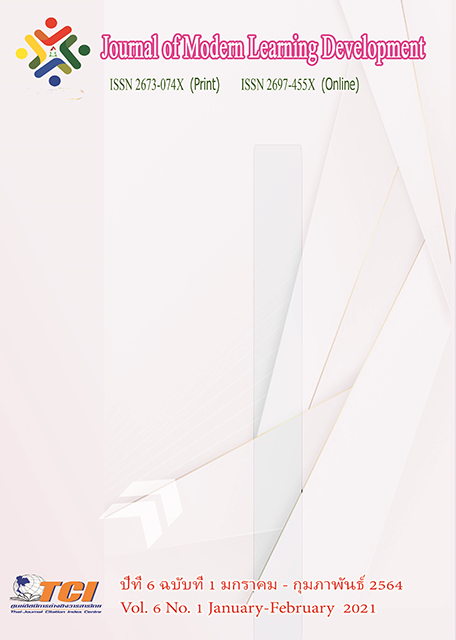An Analytical Study of the Concept of Narayana Avatar in Hindu Philosophy
Main Article Content
Abstract
This article aims to 1) study the concept of Avatar in Hindu philosophy, 2) study the concept of Narayana Avatar and 3) analyze the concept of Narayana Avatar in Hindu philosophy. It is a documentary research by collecting data from primary and secondary documents. And present the research results in a descriptive method
The study found that 1. The concept of avatar is Division or descending of gods to the human world With an important mission to subdue and preach and direct the way to the highest truth The avatar's manifestation appears in human, non-human, and animal forms, but still maintains divine qualities: His Majesty the King Omniscience And appeared to him everywhere.
2. The concept of Narayana Avatar The mention of the incarnation in various eras, including 1). Satanism is an era in which the fullness of good There are 4 avatars: a fish avatar, a turtle avatar, a turtle-shaped avatar, a taro-fanged pig, a half-human, half-lion-shaped avatar. 2) The trinity is an era when the goodness of human beings begins to decline. There are three incarnations: Vamnavatar, an incarnation of a short Brahman, Prasuramavatar, an incarnation of a Brahman named Prasuram, Ramavatar, an incarnation of Rama, King of Ayodhya 3) The Dvarajuk is an era where evil and good are equal, namely Krishna Vatar, an incarnation of Krishna, and 4) the chaos of the dark age because people are far away from God. He was an avatar of a Buddha and an avatar was a human riding on a white horse.
3. The incarnation of Narayana Avatar in Hindu philosophy. It shows the evolution of humanity can be divided into 3 main categories as follows: 1) Animal means including all types of living things both living in water, on land and animals living on land and in water Man here refers to the human being. 3) Man refers to people who are able to train and develop themselves to progress in civilization and morality in a sequence.
Article Details
References
กรุณา-เรืองอุไร กุศลาสัย. (2550). ภารตวิทยา. (พิมพ์ครั้งที่ 6). กรุงเทพมหานคร: สำนักพิมพ์ศยาม
กิ่งแก้ว อัตถากร. (2552). ความเป็นมาของนาฏยศิลป์จากสมัยพระเวท และประวัติศาสตร์ของอินเดียจากสมัยพระเวทสู่สมัยฟื้นฟูศาสนาดั้งเดิมของชมพูทวีป. พิษณุโลก: คณะมนุษยศาสตร์ มหาวิทยาลัยนเรศวร.
แคทรียา อังทองกำเนิด. (2556). การอวตารในศาสนาฮินดู. วารสารมนุษยศาสตร์ คณะมนุษยศาสตร์ มหาวิทยาลัยเกษตรศาสตร์ วิทยาเขตบางเขน. 20 (1), 1-22.
เทวสถาน โบสถ์พราหมณ์. (2546). หนังสือเฉลิมพระเกียรติพระบาทสมเด็จพระเจ้าอยู่หัวในมหามงคลวโรกาสทรงพระชนมายุ 75 พรรษา. กรุงเทพมหานคร: เทวสถาน โบสถ์พราหมณ์.
พระบาทสมเด็จพระมงกุฎเกล้าเจ้าอยู่หัว.(2516). เทพเจ้าและสิ่งน่ารู้. กรุงเทพมหานคร: ธรรมบรรณาคาร.
พรหมศักดิ์ เจิมสวัสดิ์. (2523). คนกับพระเจ้า. กรุงเทพมหานคร: สำนักพิมพ์โคมทอง.
สุนทร ณ รังษี, (2545). ปรัชญาอินเดีย ประวัติและลัทธิ. (พิมพ์ครั้งที่ 3). กรุงเทพมหานคร: โรงพิมพ์แห่งจุฬาลงกรณมหาวิทยาลัย.
แสง มนวิทูร .(2515). ศรีภควัทคีตา. (พิมพ์ครั้งที่ 2). กรุงเทพมหานคร: แพร่พิทยา.
Armstrong Jeffrey. (2010). Spiritual Teachings of the Avatar. New York: Atria Books
Courtois Luc. (2008). The Promise Fulfilled (part two). Bangalore: Message Publications
Huxley Aldous, (2009). The Perennial Philosophy. New York: Harper Perennial Modern Classics.
Winternitz, Maurice. (1972). History of Indian Literature. New Delhi: Oriental Books Reprint Corporation. Second revised reprint edition
Swami Kriyananda. (2007). The Essence of the Bhagavad Gita. (2nd ed). Nevada City: Crystal Clarity Publishers.


